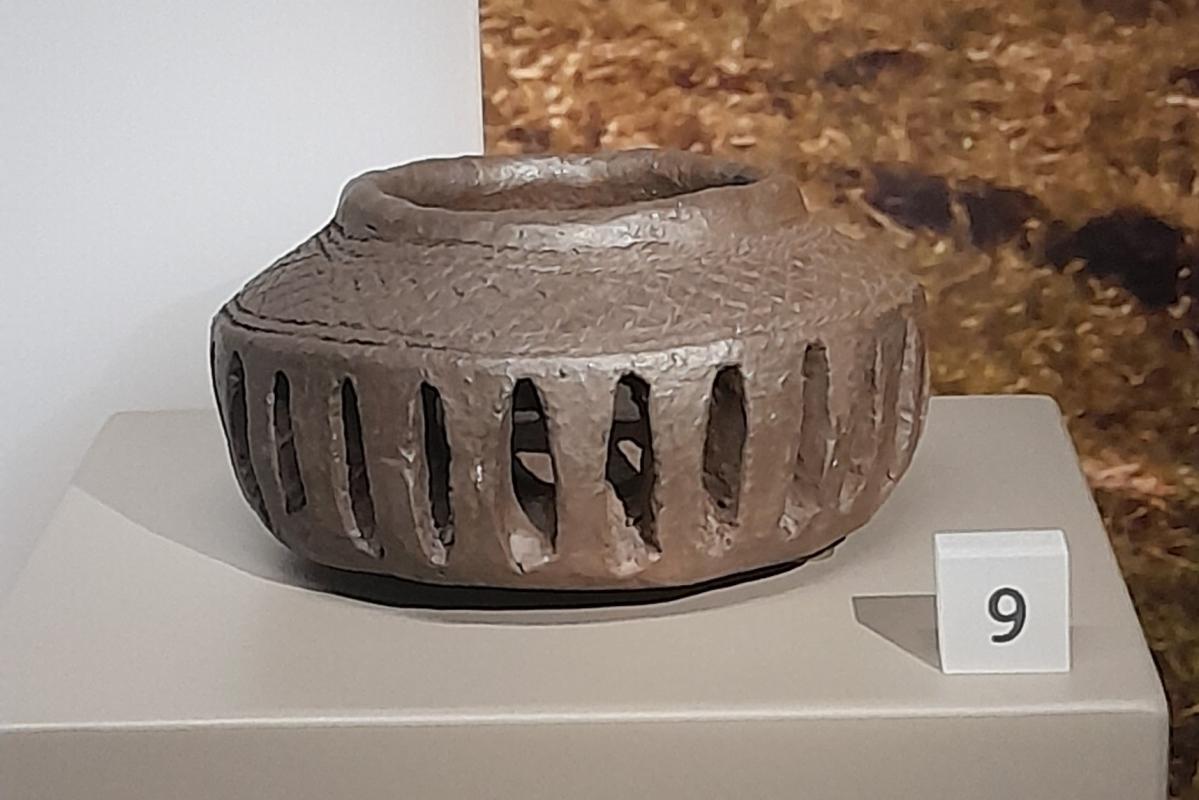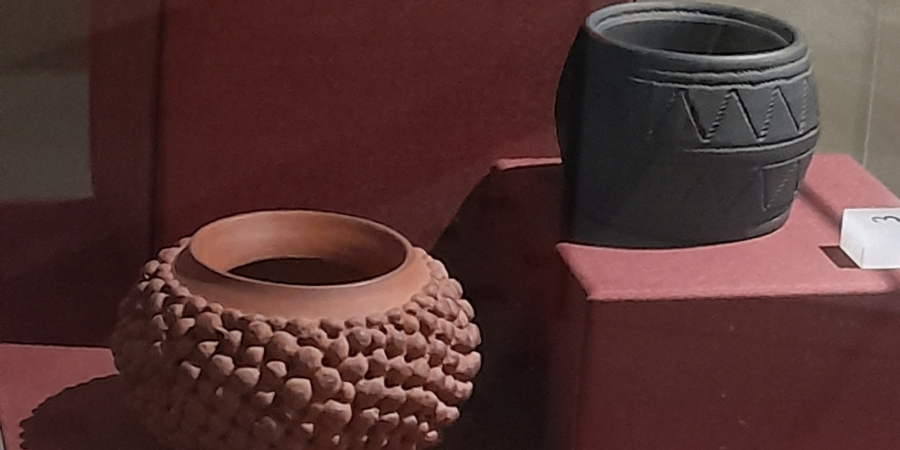In this blog, written exclusively for the Festival of Archaeology by Pottery Expert, Katie Marsden, we invite you on a journey through the fascinating connection between archaeology and creativity exploring two groups of ceramic vessels. This blog explores human expression through the fascinating medium of pottery, linking a Bronze Age burial site in Wiltshire to a 19th-century factory in Staffordshire.
What links a Bronze Age burial in Wiltshire and a 19th century factory in Staffordshire? The answer is pottery, creativity and an enigmatic group of vessels.
The story begins in the Bronze Age, where 1 km south of Stonehenge, on Wilsford Down, a group of barrows are erected to bury the dead. In one, labelled Wilsford G7, a body is placed with the head to the west and with a group of ‘elegant little trinkets’. In another, Wilsford G8, the body is cremated and the remains are also placed with goods. To seal the dead, mounds of earth are piled over the graves to form barrows. They remain untouched for around 3000 years.
As the centuries passed, the land was largely undisturbed and in the 18th century, it was described as being a ‘verdant down’ – green with grass or other vegetation, and no doubt used to graze sheep as it probably had done for much of its history.
It was at this time that a growing interest in the past was being developed, led by notable local figures in Wiltshire. One such person was William Cunnington (1754-1810), a self-educated merchant who lived and worked in Heytesbury, Wiltshire. He began to self-fund excavation into barrows in 1798, taking care to record his findings methodically. By 1804, Cunnington was attracting substantial financial investment to continue his work.
One investor was Sir Richard Colt Hoare, born in London in 1758. Sir Colt Hoare inherited the Stourhead estate in Wiltshire in 1785 from his grandfather, with the condition that he left the family banking business. This enabled him to concentrate on his archaeological studies, embarking on a continental tour after the death of his wife in childbirth that year and purchasing Glastonbury Tor, funding restoration of the church tower there, the following year. Colt Hoare and Cunnington embarked on the first excavations of Stonehenge in 1798 and in 1808 they started work at Wilsford Down.

Stonehenge Incense cup, Wiltshire museum.
At Wilsford Down, barrow G7 is described as being 102 feet (31 m) in base diameter and 10 feet (3 m) in elevation. Those ‘various little trinkets’ included gold, amber and shale beads, a collared urn placed at the feet and a 'beautiful little grape cup'. The cup is thought to be one of the finest of its type and is decorated with six bands of clay nodules, each set into a hollow in the cup, with perforations in between. ‘Grape’ cups are unique to Wessex and are also known as incense cups, as Colt Hoare thought that they would have been suspended over the funeral pyre, the holes allowing the perfumed smoke to escape. Others believe that they were used as burners for inducing, trans-inducing or fumigating smoke. We don’t know exactly what they were used for with any certainty but that only adds to their appeal.
Barrow G8 is 92 feet (28 m) in base diameter and 11 feet high (3.3 m). With the cremated human remains were a gold covered shale cone, a gold covered horned object, two gold covered amber disks, amber pendants and a gold covered bone disc. An 'earthen cup of a very singular and novel pattern' was also recovered, now referred to as the ‘Stonehenge cup’, as it is thought to emulate the outer circle of Stonehenge. Like the ‘grape’ cup, it is thought that this vessel was also used as an incense cup.
Whilst Cunnington was ahead of his time with his excavation methods, recording his findings in detail, he did fall short of modern excavation methods and as he re-interred the skeletal remains he found, we know little about the individuals from these graves.

The Grape Cup from the Wilsford Barrow G7, Wiltshire Museum.
The tale of these spectacular vessels doesn’t end there, however. Cunnington kept most of what he found at his house in Heytesbury, Wiltshire. This might seem odd to us now, as archaeologists routinely deposit finds and paper archives from excavations with the local museum so that they can be preserved for posterity and accessed by all. However, museums at this time were uncommon, the British Museum opened in 1759 and it was Cunnington’s grandson – also called William Cunnington – who was the primary founder of the Wiltshire Museum in 1853.
Sir Richard Colt Hoare commissioned his friend, Josiah Wedgwood II (1769-1843), to make replicas of the incense cups found during these excavations for a wider audience. Wedgwood made them in jasperware, a dense white stoneware developed by his father, Josiah Wedgwood I, by 1774. Jasperware takes colour exceptionally well and the most famous example is the Wedgwood Blue, an icon of the factory that was produced in vast numbers and exported around the world. To mimic the earthenware incense cups more closely, Wedgwood chose red and black jasperware, producing a finer, more vibrant example of the Bronze Age vessels. It is unknown as to whether these replicas became the commercial success that was hoped for, but the Wedgwood copies are now over 200 years old themselves and examples entered the Wiltshire Museum’s collection in 1994. They are now displayed alongside the originals in the Prehistoric Wiltshire gallery. The incense cups of Wilsford Down also continue to inspire potters, with replicas still being made to this day.
You can see both the original incense cups, and the Wedgwood copies, on display at the Wiltshire Museum, Devizes.
